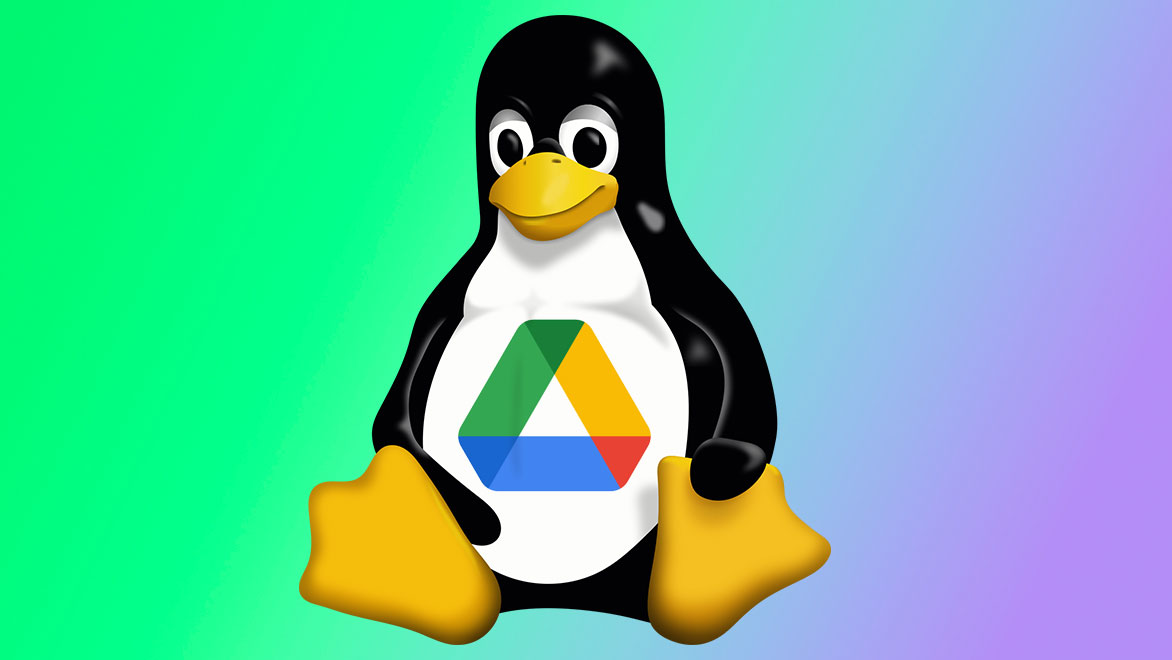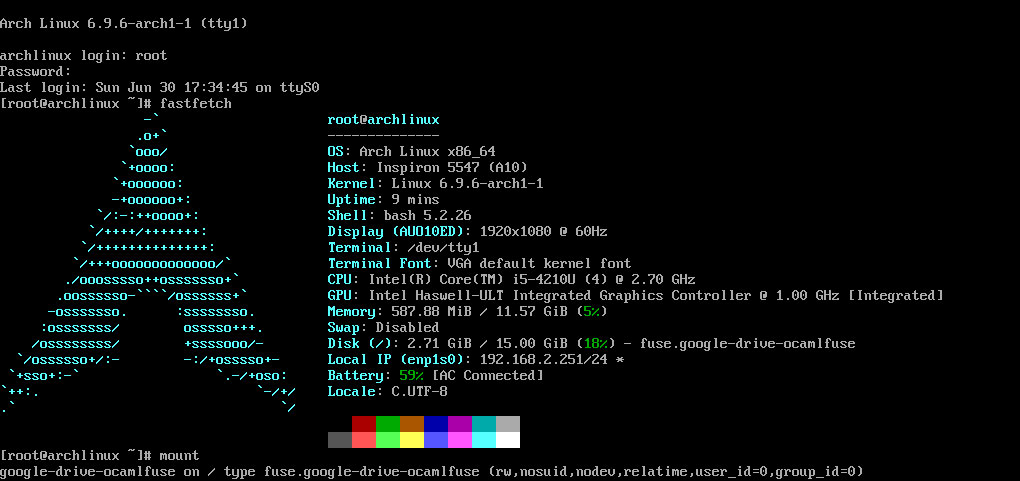Dev boots a PC from Google Drive cloud storage — a storage-less laptop becomes a truly cloud-native computer
Apparently, the Linux boot is slow, but the 'possibilities are endless.'

A developer is celebrating after booting a Linux system from Google’s cloud storage platform. After overcoming a multitude of hurdles, they successfully booted a storage-less laptop from Google Drive and thus created a "Cloud Native Computer."
Ersei, a Computer Science student at Purdue University and open-source developer, felt compelled to take on this cloud boot challenge after a friend recalled how they managed to get Linux to boot from a Network File System (NFS). The young developer explains that “competitiveness is a vice of mine” and wanted to dream up the most ambitious way to ‘one-up’ the NFS tale, and in a “ragged screech of madness,” decided to try and boot Linux from Google Drive.
With a modicum of Linux software development experience under their belt, Ersei thought adopting FUSE, a program that acts as a filesystem driver in userspace, was a good starting point. The grand idea was that during the typical Linux boot process, a FUSE filesystem-based RAM disk would be offered up to serve key apps, OS, and networking binaries to make the Google Drive booting dreams into a reality.
To read more about the ensuing wrangling between developer and Linux, EFI images, ramfs, pivot_root and switch_root – as well as a host of errors from Google Drive symlinks - please dive into the source Ersei.net blog.
Once the major tweaking, finessing, and general ironing out of surprising chasms between expectations and reality was done – it was time to try booting from Google Drive on real hardware. Luckily, Ersei had a spare laptop with no internal storage for testing. Only a few tweaks were needed in the migration from virtual machine (VM) development: the correct Ethernet driver, display, and network settings to build into a unified EFI (Extensible Firmware Interface) file.
Ersei, the developer behind this so-called Cloud Native Computer, says the project was primarily a “silly” pursuit. There is also a problem with booting from Google Drive currently being very slow. However, the dev also boasts that “the possibilities are endless” and would welcome any companies or individuals who wish to get in contact and discuss commercializing this project or something related to it.
We note that various systems have supported network booting and even HTTP booting for decades. Google Drive is quite a different proposition, but how much code can you add to the local side of the equation (firmware, etc.) while still saying it is booting from a remote source?
Get Tom's Hardware's best news and in-depth reviews, straight to your inbox.

Mark Tyson is a news editor at Tom's Hardware. He enjoys covering the full breadth of PC tech; from business and semiconductor design to products approaching the edge of reason.
-
Krieger-San There's a reason why we have internal storage drives; primarily for reduced access latency. Placing the block storage device across the internet not only makes it slow to operate (obviously), but it will also do one of two things: create congestion for people outside your household by doing so; or significantly throttle your own internet to only provide bandwidth for communicating with said remote block storage device.Reply
This is a great Proof of Concept; terrible idea, in my opinion. (Re: I'm a 10 year Systems & Network Admin)
This is also why SAN's are utilized - a dedicated, isolated network with its own bandwidth pool strictly for block storage communications ;) -
USAFRet Reply
Sounds like thin clients, used all over the world.ekio said:The nightmare.
Relying on servers for even your OS…
OS held on the company server farm.
Of course, only for specific purposes.
This is absolutely NOT for thee and me. -
ivan_vy Reply
data security, updates, demotivate the thieves... a great idea for 'specific purposes'.USAFRet said:Sounds like thin clients, used all over the world.
OS held on the company server farm.
Of course, only for specific purposes.
This is absolutely NOT for thee and me. -
mitch074 It has one huge interest : sleepless devices. As it is a RAM disk image, you load it once; it runs from RAM until you completely power off the device. Every time you boot up from scratch, you get an up to date system.Reply
It IS a compelling idea on paper; if you make the base OS very small (and that's possible), booting may not take too long; you get a brand new, completely up to date core OS (streamlined kernel + limited user space + basic GUI + browser could fit under 200 Mb) and do the rest of your activities in the cloud...
Yeah, I wouldn't be surprised to see ChromeBooks using that system in the coming years.
The cost ? Bigger UEFI images. -
jeremyj_83 Reply
This is already done in data centers all the time using PXE network booting. In a way this is just a PXE boot but the storage is device is MUCH further away and most likely on a slower network connection to you.ekio said:The nightmare.
Relying on servers for even your OS… -
jeremyj_83 Reply
Since this was booted from Google Drive, I bet it was object storage instead of block.Krieger-San said:There's a reason why we have internal storage drives; primarily for reduced access latency. Placing the block storage device across the internet not only makes it slow to operate (obviously), but it will also do one of two things: create congestion for people outside your household by doing so; or significantly throttle your own internet to only provide bandwidth for communicating with said remote block storage device.
This is a great Proof of Concept; terrible idea, in my opinion. (Re: I'm a 10 year Systems & Network Admin)
This is also why SAN's are utilized - a dedicated, isolated network with its own bandwidth pool strictly for block storage communications ;)
